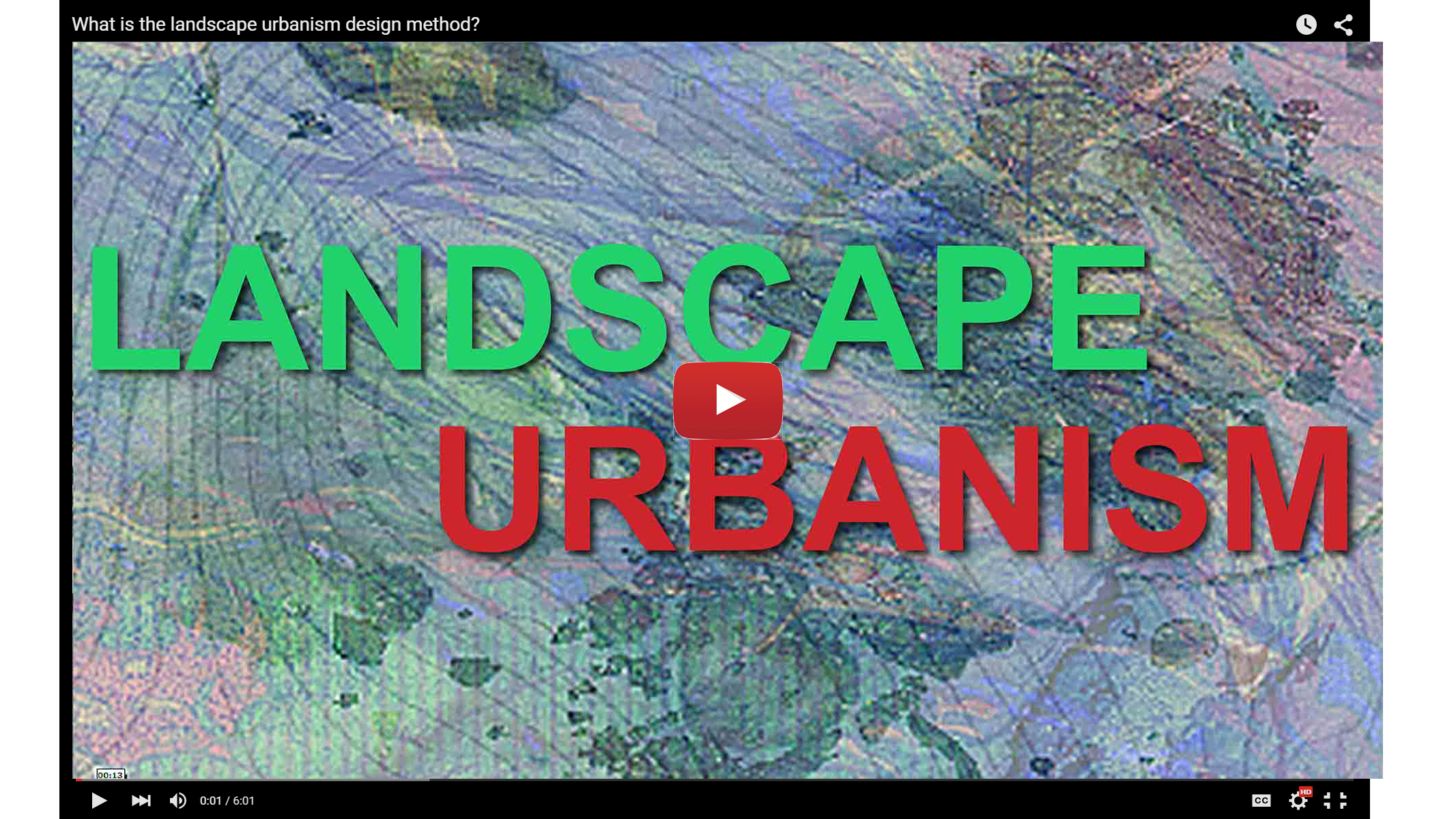Landscape Urbanism: definitions and history

The definition of landscape urbanism which informs the above video is that: LANDSCAPE URBANISM is an approach to the design of cities, and their components, which aims to make good places through a creative integration of natural, human and cultural process layers (Tom Turner, 2015).
Notes on the terminology used in Tom’s definition of landscape urbanism
‘Landscape’ is used in the designers’ sense to mean ‘a good place’. As in the phrase ‘landscape design’, this usage is distinct from, but related to, the ways in which the word ‘landscape’ is used by artists and geographers. The five primary components of the landscapes we design are land, water, vegetation, buildings and pavings.
‘Urbanism’ is used primarily in the sense of ‘urbanization’. This usage comes, via French, from the Catalan engineer Ildefons Cerda (who laid out Barcelona’s Eixample in the nineteenth century and published a Théorie générale de l’urbanisation in 1867). Cerda’s approach was that of an engineer. The American Heritage Dictionary gives three definitions of urbanism: (1) the culture or way of life of city dwellers, (2) urbanization (3) the theory of city planning.
‘Good places’ is used to mean places which have the Vitruvian virtues of utilitas, firmitas and venustas (translated into English in 1624 as commodity, firmness and delight).
‘Cities and their components’ is used to encompass places which range in size from large to small (city regions to small open spaces in urban areas).
‘Creative integration‘ is used to signal that landscape urbanism is a creative process which brings together ideas and analysis from many disciplinary fields.
‘Approach‘ is used as a reminder that ‘landscape urbanism’ is situated within ‘landscape architecture’ as a design field to which several professional groups contribute.
‘Layers’ refers to information drawn from related disciplines and often represented as 3D models with attributes held in Geographical Information Systems (GIS).
‘Natural process layers‘ is used to include a broad spectrum of natural process information (eg about geology, soils, hydrology, ecology etc). Ian McHarg used transparent overlays to represent this information and it is now managed using Geographical Information Systems and Geodesign software.
‘Human process layers’ includes data about human processes (circulation routes, enclosure, ownership, spatial types, land management systems, views, viewsheds, cultural constructs, land use activities and zones).
‘Cultural process layers’ is used to mean layers ‘relating to culture’ in the two senses of (1) relating to intellectual and artistic pursuits (2) relating to the culture of a particular society, people, locality or period.
Other definitions of landscape urbanism
Definition of landscape urbanism by Charles Waldheim
Urbanism describes a disciplinary realignment currently underway in which landscape replaces architecture as the basic building block of contemporary urbanism. For many, across a range of disciplines, landscape has become both the lens through which the contemporary city is represented and the medium through which it is constructed.
Definition of landscape urbanism by James Corner
[Landscape Urbanism] ‘brings together two previously unrelated terms to suggest a new hybrid discipline. Not unlike the combination of biology and technology to spawn biotech, or of evolutionary science with business management to produce organizational dynamics, the merging of landscape with urbanism suggests an exciting new field of possibilities’.
Definition of landscape urbanism by the Architectural Association 2015
[Landscape Urbanism] ‘aims at developing instruments, proposing responses and investigating potentials emergent from the developmental pressures that regional networks exert on localities today. The understanding of landscape is central to this project, both for the degree of spatial control it offers to large-scale urbanism and for the way in which it allows the integration of natural processes and urban development into a sustainable artificial ecology. The landscape offers the double opportunity to reframe urban problems and recontextualize the practice in general’.
Definition of landscape urbanism by Sarah Kathleen Peck
Landscape urbanism is a mode of thinking about the design and functioning of cities that places landscape architecture as one of the first steps in urban development, rather than the last.
Definition of landscape urbanism by Christopher Grey
Landscape urbanism is the approach to the design and planning of open space where landscape is the structuring medium. Landscape urbanism considers the horizontal field over the vertical figure-ground and secondly, it describes a move from the pictorial to the operational; in other words process (both in analysis and design synthesis) is favoured over a static end form.
Definition of landscape urbanism by Julia Czerniak
The notion of site propelling landscape design work interfaces with the emerging amalgam of practices known as landscape urbanism, a phrase taken here to be the conceptualization of and design and planning for urban landscapes that draw from an understand of, variously, landscape’ discipliniarity (history of ideas), functions (ecolgies and economies), formal and spatial atrributes (both natural and cultural organizations, systems, and formations), and processes (temporal qualities) impacting many scales of work.
Definition of landscape urbanism by Ignacio Bunster-Ossa
[Landscape Urbanism is an] ‘inside-out reversal of the city/landscape relationship… placing open space concerns at the core of planning and design of urban areas’.
